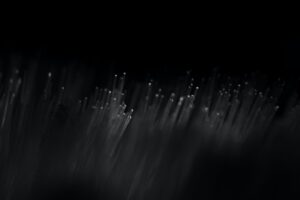 Fiber Bragg gratings are currently widely used in optical fibers and light guides for compaction of channels along the wavelength, optical filtering of signals, as resonator mirrors in fiber and semiconductor laser systems, as smoothing filters in optical amplifiers, to compensate for dispersion in the main communication channels.
Fiber Bragg gratings are currently widely used in optical fibers and light guides for compaction of channels along the wavelength, optical filtering of signals, as resonator mirrors in fiber and semiconductor laser systems, as smoothing filters in optical amplifiers, to compensate for dispersion in the main communication channels.
Another field of application of FBG technology includes its use in various measuring systems that control environmental parameters, such as temperature, humidity, pressure, deformation, and chemical content. Bragg gratings distributed along the length of the light guides allow for creating distributed acoustic systems that differ favorably from traditional complexes of the same purpose in cost and technology of production.
FBG technology for recording Bragg gratings distributed in a light guide is a key element in creating a new generation of measurement systems. Hydroacoustic antennas developed on the basis of such optical fibers, as well as systems for the protection of extended objects and systems for monitoring the condition of main pipelines, are increasingly being used abroad.
A distinctive feature of these fiber optic systems is the large extent of controlled zones, speed, and unique information capabilities. When fiber Bragg gratings are written at a standard optical fiber, a problem arises because of the fact that such a fiber has weak photosensitivity and a low saturation threshold, which is not sufficient for effective recording of gratings.
The main solution method of FBGs is to increase the concentration of germanium dioxide in the core. Other methods consist of alloying the pieces for the creating of optical fibers with such chemical elements as boron, tin, nitrogen, phosphorus, antimony together with germanium, which leads to an increase in the photorefractive power of the light guides.
Writing of fiber Bragg gratings can be classified by the type of laser system used for production, the wavelength of beam emission, the recording technique, the irradiated material, and the type of Bragg grating. Lasers used for FBG writing can be either continuous or pulsed, with a wavelength of emission from the infrared (IR) to the ultraviolet (UV) range of the spectrum.
These differences determine the spatial and temporal coherence of the optical emission sources used for writing, which, in turn, determines the choice of the appropriate method for recording fiber Bragg gratings. The main methods for FBG writing include the step-by-step method, the phase mask method, and the interferometric method.
The need to increase the speed of information transmission, associated with the development of telecommunications, increasing information flows, the growth of global information systems and databases, the expansion of the number of users, led to the fact that fiber optic system communication lines were developed using spectral multiplexing of optical channels.
Optromix is a fast-growing vendor of fiber Bragg grating (FBG) product line such as fiber Bragg grating sensors, FBG interrogators and multiplexers, Distributed Acoustic Sensing (DAS) systems, Distributed Temperature Sensing (DTS) systems. The company creates and supplies a broad variety of fiber optic solutions for monitoring worldwide. If you are interested in structural health monitoring systems and want to learn more, please contact us at info@optromix.com

